Open Entry
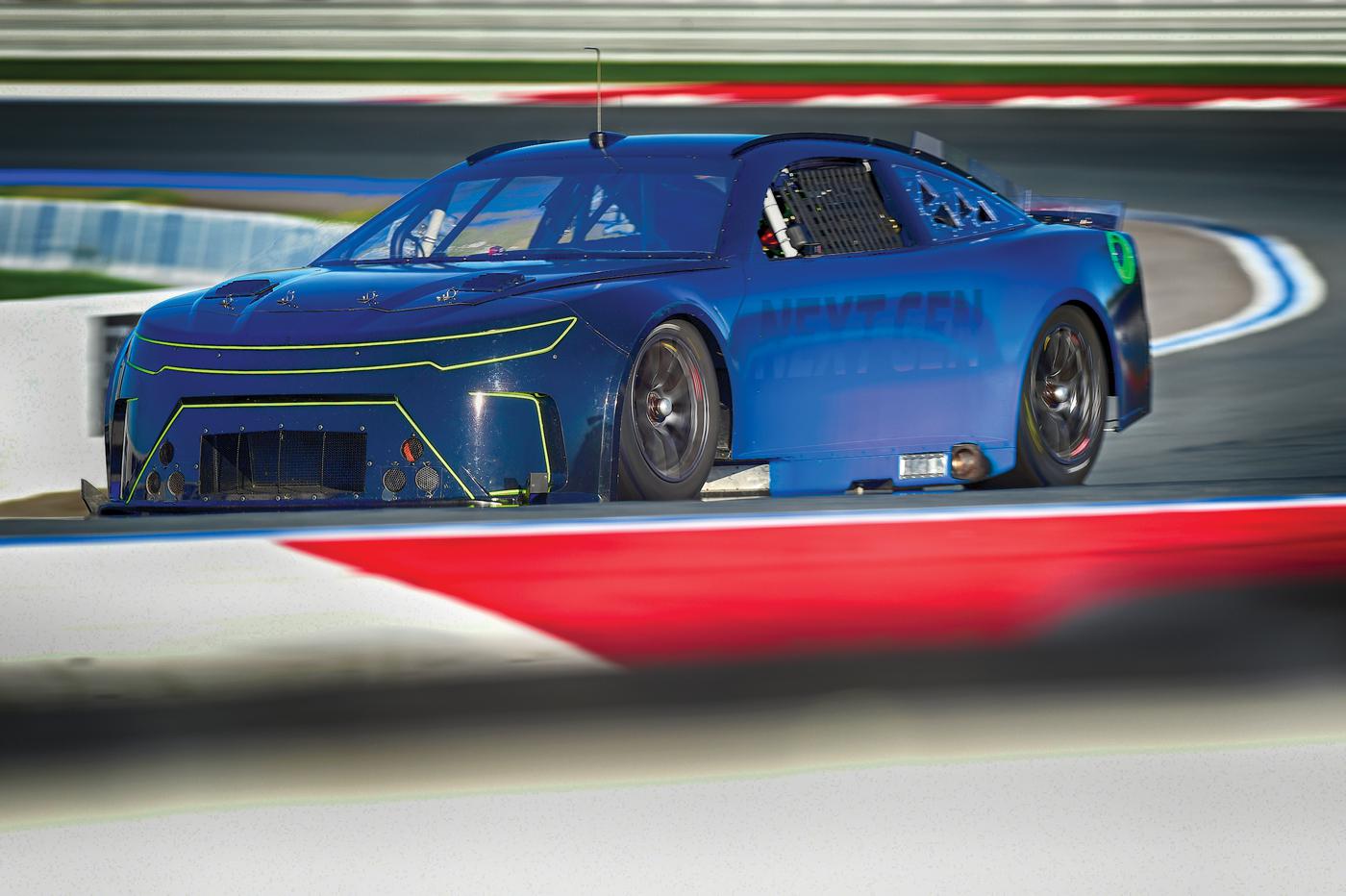
How NASCAR’s Next Gen car platform became an international launching pad.
It’s often a little moment when the reality of a massive accomplishment sets in.
NASCAR’s Garage 56 entry had just completed the 24 Hours of Le Mans, a historic achievement in which a modified NASCAR Cup Series car competed on the same track as Hypercars, LMP2 cars, and GT cars in the legendary endurance race. It was the culmination of a collaborative effort led by IMSA President John Doonan.
Amid the post-race hype and congratulations, Doonan visited a local cathedral the following day for a moment of solitude. However, it wasn’t long before a man and his son noticed Doonan’s Garage 56 jacket and came up to him with an unusual request. They wanted Doonan to take a video of them.
“In the video, they’re wearing 24 Hours of Le Mans hats, and the guy says, ‘I never watched NASCAR before and I live in Miami, but I can assure you after what I saw with the Garage 56 project, when I go home, I’m going to go to the Homestead race and try to tune in and learn more because they opened my eyes,’” Doonan recalled. “For me, that was a big milestone.”
How did NASCAR reach a point where new fans were so fascinated by the sport that they were making testimonial videos at a French cathedral? That story begins in 2018, when development began on the NASCAR Cup Series Next Gen car.
Genesis of Next Gen
“The platform we had, while it had served us well, it was getting old and wasn’t as relevant to our existing OEMs anymore,” said John Probst, NASCAR senior vice president, chief racing development officer. “The suspensions on them got pretty antiquated, so we had the opportunity to start with a clean slate.”
Probst and his development team went to work on the Next Gen car. They modernized the car with significant upgrades including an independent rear suspension, rack-and-pinion steering, transaxle, larger brakes, 18-inch forged aluminum wheels with a single lug-nut design, and wider tires. They also made significant aerodynamic adjustments, sealing the bottom of the car with an underwing and rear diffuser, while adding hood louvers to maximize engine performance independent of aero.
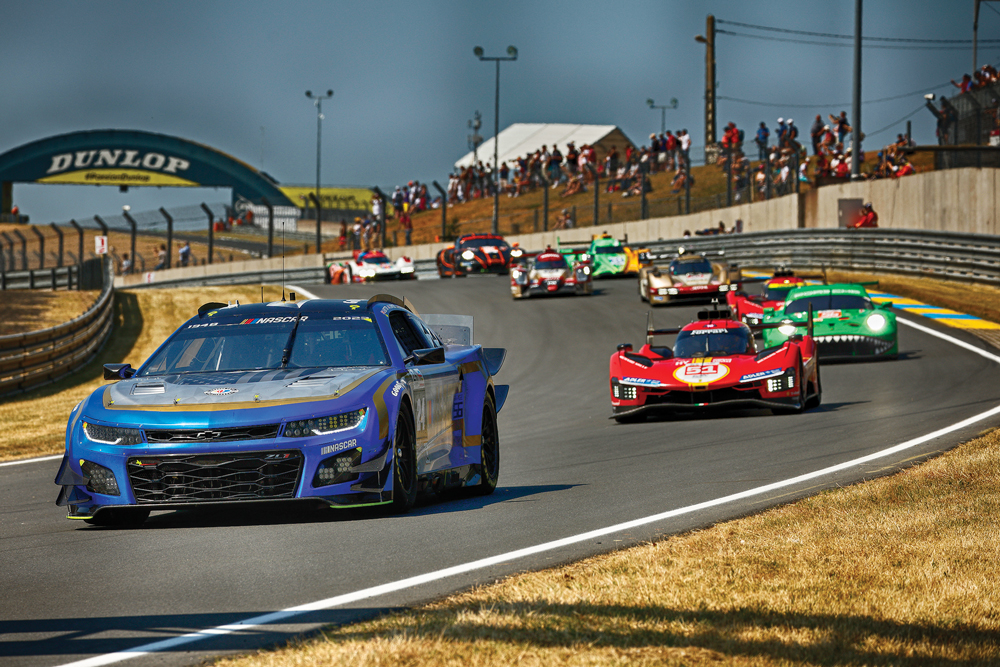
“As we were designing the new car, we were keeping an eye out for not just the powertrains, but how relevant our car topology is to the rest of the world,” said Probst. “The idea was not only to attract new [team] owners, but how can we try and attract drivers from all over the world.”
Significant changes to the car’s anatomy made it more akin to traditional GT cars, while the sanctioning body also mandated the use of single source supplied parts. The latter was done to reduce development costs for teams and achieve more parity in the Cup Series. In 2022, the Next Gen car’s first year on track, the Cup Series saw a record-tying 19 different winners and success from newer teams including Trackhouse Racing (co-owned by Pitbull and Justin Marks) and 23XI (co-owned by Michael Jordan and Denny Hamlin).
The on-track success of the Next Gen car in 2022 was a positive step, but NASCAR Chairman and CEO Jim France saw the car as an opportunity to do something historic on the world stage—at Le Mans.
Taking on Le Mans
In 1976, France’s father, NASCAR founder Bill France Sr., had the vision to take two Cup Series cars to Le Mans, France, and compete in the 24 Hours of Le Mans. Unfortunately, both the Ford Torino and Dodge Charger failed to reach the halfway point of the race before retiring. Fast forward nearly 50 years, and the Next Gen car provided a platform to not only complete the race, but to be competitive. NASCAR was ready for another shot at Le Mans.
Of course, a good platform is not the same as a race-ready car on the starting line of a 24-hour race. The Next Gen car would require significant modifications that would take a collaborative approach from NASCAR and various partners.
That is where Doonan and the International Motor Sports Association (IMSA) team came into play. While NASCAR and IMSA are both owned by the France family, the two organizations had historically operated separately. The Garage 56 program marked a turning point in that relationship.
“The whole Next Gen project and how that morphed into the Garage 56 effort has pretty much blurred the lines between NASCAR and IMSA,” explained Probst. “I would say now in retrospect, this has been a project that we’ve all kind of unified around even beyond the car, with our relationships across the company.”
In addition to NASCAR and IMSA, the Garage 56 collaboration recruited Chevrolet, Hendrick Motorsports (HMS) and Goodyear. The IMSA component was crucial, as its expertise in endurance racing and international relationships with the Automobile Club de I’Ouest (ACO) and the Federation Internationale de I’Automobile (FIA) helped pave the way and inform NASCAR and HMS engineers how to best develop an endurance car for Le Mans.
Starting with a 5.8-liter V8-powered Chevrolet engine from HMS, the Garage 56 team made various adjustments to the car. Changes included adding real headlights and taillights, a larger fuel cell, eliminating nearly 500 pounds of weight (compared to a current Cup car), and making various aerodynamic modifications to increase downforce, including dive planes and underbody adjustments to the front splitter and rear diffuser. “From an aero perspective, we actually doubled the downforce on the Garage 56 car,” said Probst. “The majority of that was underneath the car.”
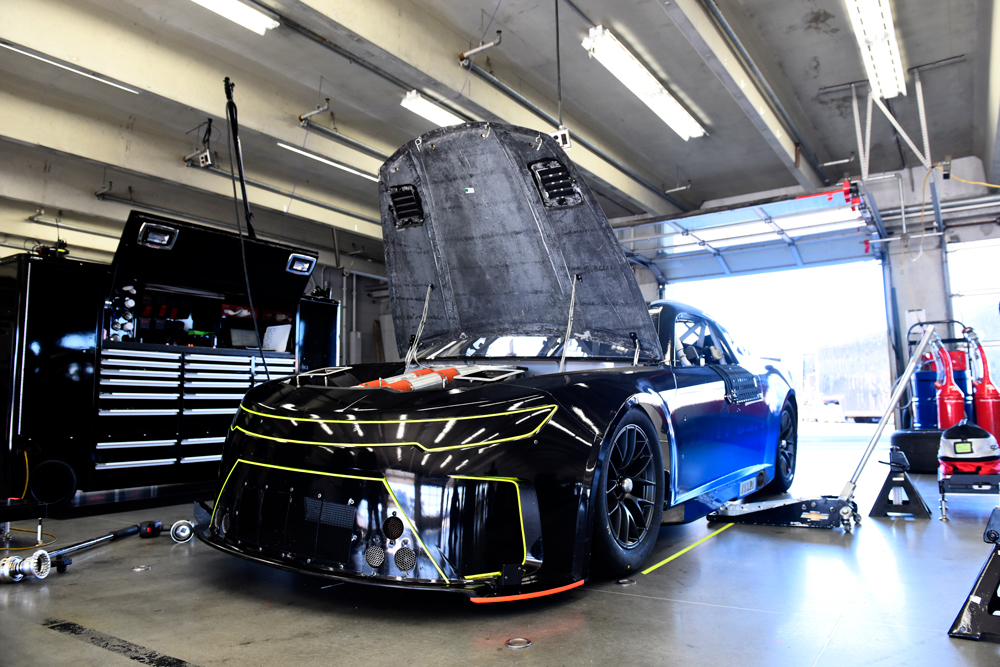
While Garage 56—a single entry “innovative car” category—does not have any in-class competition, the ACO provided NASCAR with a target lap time to be midfield of the GT cars. When it came time to qualify, Mike Rockenfeller pushed the car to a lap time of 3:47.976, nearly four seconds faster than the quickest GT car in the field, a Ferrari 488 GTE.
“I don’t think any of us could be more proud of how we performed over there,” said Doonan. “We certainly hit expectations on Day One, in terms of lap time performance the ACO was hoping for. Then they asked us to go quicker, and fortunately, thanks to John Probst and his team, we had the capability to do that.”
Fans quickly took notice.
“You just had this constant buzz about the American car that was there,” said Chad Seigler, NASCAR chief international officer. “Whether that was the difference in the look of the car, the sound of the car, there was a buzz around the venue that week.”
During the race itself, an all-star driver roster consisting of seven-time NASCAR Cup Series champion Jimmie Johnson, 2009 Formula 1 world champion Jenson Button, and two-time 24 Hours of Le Mans winner Mike Rockenfeller shared responsibilities for piloting the car around the 8.4-mile Circuit de la Sarthe. The Garage 56 entry showed strong pace in the race, completing 285 laps (2,413.1 miles) and finishing 39th place in the 62-car field. Fittingly, it was Johnson who brought the car to the checkered flag in the race’s final stint.
“I thought the fans would like it when we got over there, but they absolutely loved it,” said Doonan. “I think we made a huge impression on what NASCAR is as an overall brand. And I think it’s a compliment to John [Probst] and his team on what the Next Gen car is all about because it’s very akin to the GT cars that we run. I think it had everybody starting to think more about what NASCAR is about and the capabilities of the new car.”
Capitalizing on Momentum
The “capabilities of the new car” is an important consideration. For the first time, a NASCAR Cup Series car shares design characteristics with GT cars that have long dominated the international racing scene. That pivot to a more modern car design is creating opportunities for the sport that didn’t exist a few years ago.
“Two or three years ago, I would not have guessed we’d had this car at Le Mans running, and then running as well as it did,” said Probst. “I’m just really excited for the future of not just this car and where it’s going, but our relationship with the IMSA side and growing that.”
The on-track performance grabbed attention, but NASCAR capitalized on their Garage 56 success with a carefully planned outreach strategy.
“I think it’s probably easy for a lot of people to look at what happened during that 24-hour run there, but the build-up and those several months after [the race] were key for us,” said Seigler.
After leaving Le Mans, Seigler and the NASCAR team visited London to hold a partner summit with 70 decision makers, including track promoters, broadcast partners, potential team owners, investors, and others. Seigler’s team also restructured the NASCAR Whelen Euro Series calendar to move their race at Brands Hatch in West Kingsdown, England, to the weekend immediately following the 24 Hours of Le Mans. The race attracted 41,000 people, setting an attendance record for the Euro series.
“There are places we go in the US where 40,000–50,000 is a big number,” said Seigler. “Not just for motorsports, but all sports. So that was a positive.”
To cap off their summer, they brought the Garage 56 backup car to the Goodwood Festival of Speed Hillclimb in West Sussex, England. The final European stop resulted in further exposure to the European market, as Rockenfeller and Button revved up the crowd with burnouts and thunderous runs up the 1.16-mile hill climb.
New Drivers, New Countries, New Fans
Back in the States, a flurry of circumstances converged to deliver one of the most unlikely Cup Series victories in recent years and pique the attention of international drivers around the world. Shane van Gisbergen, a three-time Australian V8 Supercars champion, became the first driver in 60 years to win in his first NASCAR Cup Series start, pulling off the upset during a soggy race on the streets of Chicago. The New Zealand-born driver was hooked immediately, eventually signing a multi-year deal with Trackhouse Racing to come to America for a crack at NASCAR.
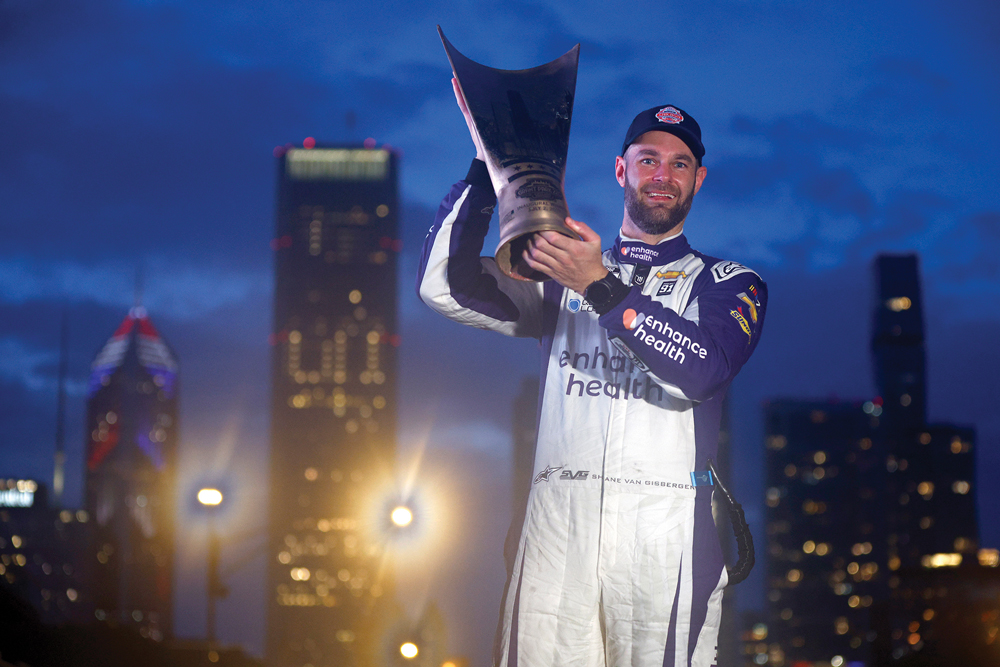
Van Gisbergen’s victory not only displayed the Kiwi’s raw driving talent, but also the Next Gen car’s potential to attract other international drivers. In fact, the 2023 Australian V8 Supercars champion, Brodie Kostecki, signed a deal with Richard Childress Racing to run a limited number of Cup races in 2024. Unconfirmed rumors suggest they aren’t the only V8 Supercar drivers with an eye on competing in NASCAR.
“I think that in a lot of ways, our car is not all that different than an Australian V8 Supercar,” said Probst. “Certainly, in the way they handle.”
Beyond Australian drivers, other international drivers including former F1 drivers Jenson Button and Kimi Raikkonen also competed in Cup races during the 2023 season. As Seigler explained, international drivers coming to NASCAR doesn’t just diversify the starting grid, it also opens the gateway to an entire country. “Traditionally what we see when a [driver] from a foreign country comes in, you pull in that country’s motorsport fans with them because there’s a rooting interest. It’s that patriotic moment.”
The Next Era
The Garage 56 effort and van Gisbergen’s win were both major international victories for NASCAR. Those two events happening within a month of each other only amplified the attention and helped to grow the sport’s international footprint. “Those all coming together was kind of a perfect storm,” said Seigler. “There’s a lot more wind at our back right now.”
It’s a new era for NASCAR, and the sport’s leaders seem to have calculated that growth requires shaking up the status quo. On the digital front, it just launched a new Netflix documentary series, NASCAR: Full Speed, while its new seven-year media rights deal that begins in 2025—worth an annual value of $1.1 billion—includes five races each season that will be streamed exclusively on Amazon Prime. Of course, the on-track product is most important, and the Next Gen car represents a major departure from its previous-generation stock cars. After two years on track, the results are exceedingly positive.
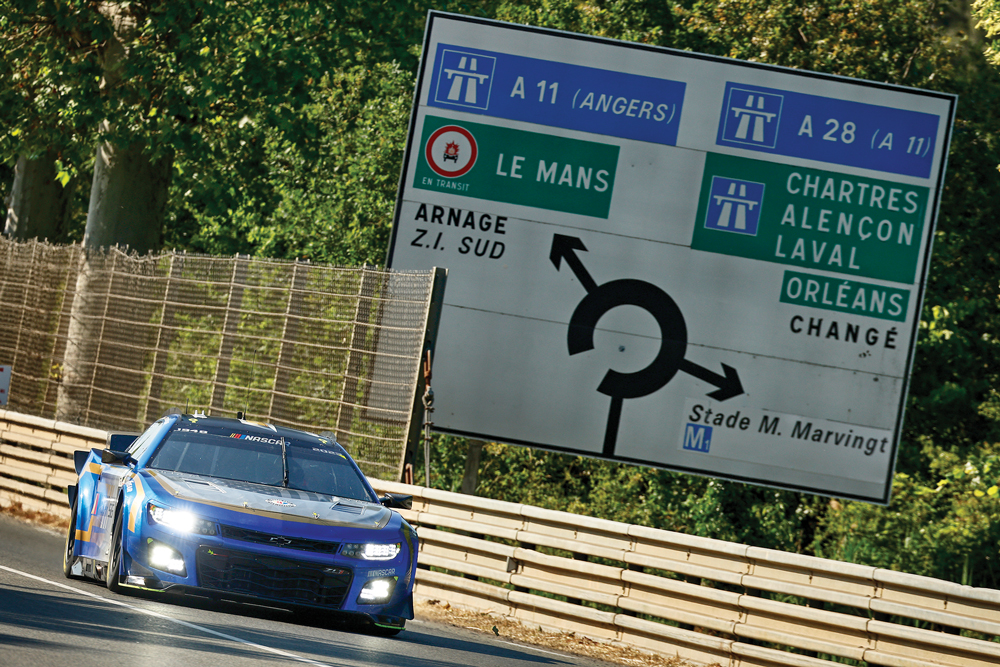
Nevertheless, Probst and his team continue to tweak on the car. In fact, data from their Garage 56 effort in Le Mans contributed to aero changes NASCAR applied for the 2024 season.
“As we go through and try to improve the packages that we run in the Cup Series, we’re able to start with some of the concepts that we actually raced at Le Mans, even for some of the short-track-package updates that we made for this year,” said Probst. “So any time we’re able to put a race car on track and try something different, even if it’s for a road race effort at Le Mans, our engineers back here at the R&D center are paying particular attention because these are lessons learned that we can apply in other forms of our race product.”
As NASCAR enters its 76th year, the sport isn’t shying away from change, and the Next Gen car is leading the charge into the future. The sanction debuted an all-electric race car at February’s pre-season Clash at the Coliseum in Los Angeles, though there are no current plans for an electric series at this time. From a powertrain perspective, Probst and his team are exploring everything from hybrid to hydrogen. “One of the tenets of the whole Next Gen project was to have a platform that would enable us to react to a lot of the trends we see coming from a powertrain perspective.”
Undoubtedly, some detractors will decry these significant changes, clinging to nostalgic visions of the past. But change is an unstoppable and constant force, one that NASCAR has chosen to embrace rather than fight.
With the success of Garage 56, a closer collaboration with IMSA, an embrace of new vehicle technologies, and an influx of talented international drivers and their fans, the sport known for left turns may have made the right turn, at the right time.
SOURCES
IMSA
imsa.com
NASCAR
nascar.com
 MEMBERSHIP LOGIN
MEMBERSHIP LOGIN JOIN PRI
JOIN PRI


